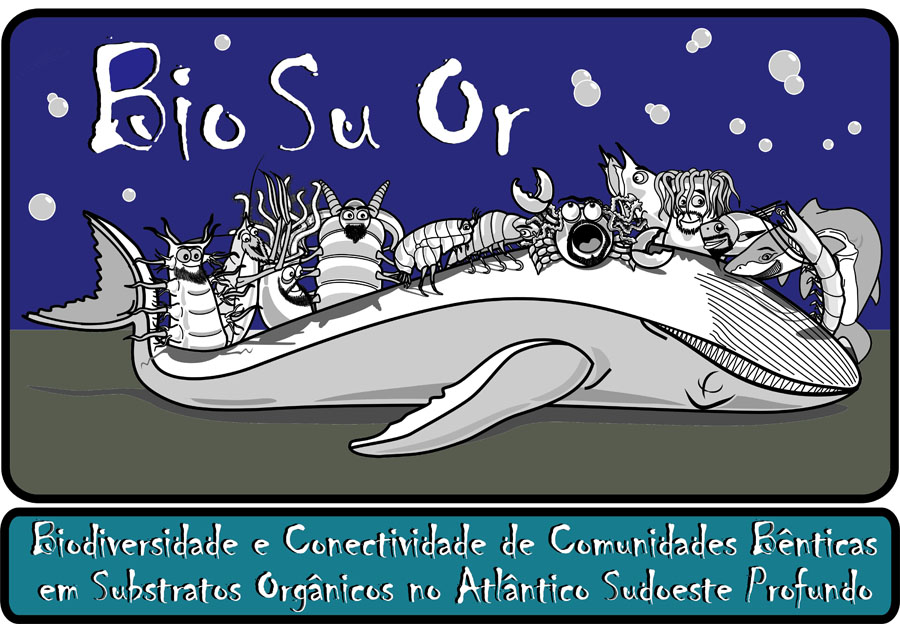
One of the most striking features of the deep ocean is the small availability of food for the organisms. Nevertheless, such regions can be punctuated by true oases where the food is abundant and the biomass great. In addition to hydrothermal vents and cold seeps, large parcels of food that fall from the surface like manna from the heavens are colonized by an abundant and endemic fauna that can present a series of evolutionary adaptations.
Whale carcasses, for example, may harbor large numbers of organisms that produce organic matter in the absence of light (chemosynthesis) and live in symbiosis with bone-eating worms. Annelid worms can feed on good quality lipids and collagen present in whale bones in a unique life strategy. In addition to carcasses, other types of falls with a large input of organic material can reach the great depths in the seabed, and one of the sources studied in this project were wood plots. Some trees, after falling down, can be carried through the rivers to the seas, from there they must float until they are completely soaked and sink, becoming an important food source in the seabed.

Humpback whale bone (left) and wood (right) implanted in the deep Southwest Atlantic Ocean by the BioSuOr Project. In the images it is possible to see Annelids of the family Hesionidae colonizing the internal region of the bone and also bivalves of the family Xylophagidae colonizing the wood.
The BioSuOr Project is funded by FAPESP and uses structures known as "landers" for conducting colonization experiments on whale bones and plots of wood in the deep sea. The intention is to make bathymetric, regional and between basin comparisons of the fauna and their biogeographic relationships. Data collected in the deep Southwest Atlantic sea off the Brazilian Southeast-South coast are being compared to its sister project being conducted in the deep Northeast Pacific off the coast of Washington State, USA. Other data from the North Atlantic and the Weddell Sea allow a broad comparison in different ocean basins that are linked by deep sea currents.



The images at the top show a lander on the ship being prepared for deployment (left) and another lander on the seabed (right), photographed through a submersible vehicle. In the lower figure the points are the sites where the landers were deployed. Unfortunately the lander placed in the red spot was not recovered.
In addition to the 6 landers present in the initial planning, the project also includes data from the first natural whale carcass found in the Atlantic Ocean and another lander deployed near the Santa Catarina region at 550 m depth. This last lander was recovered aboard the vessel Alucia, allowing a visit to our experiment in the seabed using manned submersibles.
The project includes researchers from the Oceanographic Institute and Biosciences Institute of the University of São Paulo, Federal University of Espírito Santo, University of Hawaii and Auburn University, in the USA.
